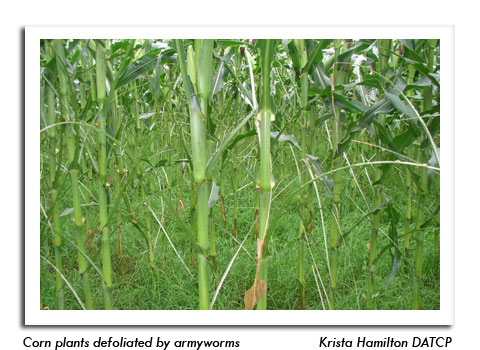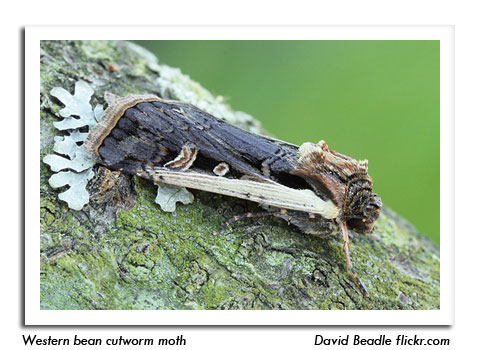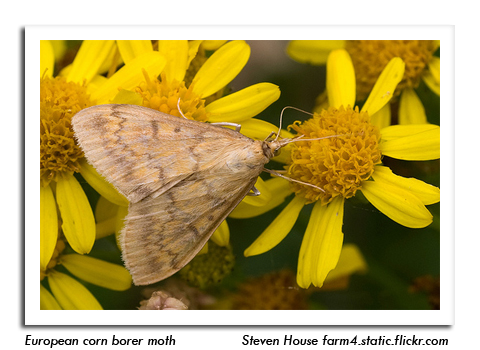
 |
|
|
Looking Ahead
Volume 63 Number 13 Date 07/26/2018 TRUE ARMYWORM - Damaging populations have been observed in Columbia, Eau Claire, Marquette, Rusk, and Vernon counties since the last report. According to one account from Marquette County, masses of caterpillars migrated across roadways from alfalfa into corn on July 16, where they stripped leaves to the midribs on more than 50% of the plants. Other reports indicate the infestations are localized and range in severity from light to severe. Armyworm outbreaks occur in an irregular geographical pattern and are difficult to accurately predict, making early detection imperative. Crop scouts and growers should remain alert in the week ahead for developing problems. JAPANESE BEETLE - Reports suggest that these beetles are abundant and significant damage is occurring in some apple orchards, nurseries and vineyards. Continued weekly scouting is advised in August for apples, corn, grapes, soybeans, and all other susceptible crops, as long as the beetles are present. WESTERN BEAN CUTWORM - Moth counts have peaked at most southern and central monitoring sites. The cumulative state total as of July 26 is 310 moths in 55 pheromone traps, which is far lower than last year's count of 924 moths in 70 traps and the second lowest late July count since WBCW trapping surveys began in Wisconsin in 2005. Captures are expected to peak next week near Wausau across the northern counties. Preliminary results of the 2018 annual trapping survey are summarized in the CORN section. SOYBEAN APHID - Monitoring is especially critical as more fields enter the reproductive stages. DATCP surveys indicate average densities are low at fewer than 10 aphids per plant, though aphid pressure usually intensifies at this time of year, and individual fields could require treatment early next month. Control is not recommended until soybean fields have been thoroughly sampled to determine if the established threshold of 250 aphids per plant on 80% of the plants has been exceeded. Field-wide average counts have not surpassed this level in any soybean field surveyed by DATCP this season. CORN EARWORM - Migrants arrived in low numbers for the third week. Although the monthly total count of only 73 moths at 14 pheromone trap locations signals a low risk of earworm infestation as of late July, scouting of silking cornfields should be increased. Trapping network participants are reminded to replace lures on a weekly basis. EUROPEAN CORN BORER - The treatment window for second-generation larvae opened last week across southern and central Wisconsin, following the accumulation of 1,550 degree days (modified base 50°F). Susceptible corn should be inspected in the week ahead for egg masses and small larvae. Chemical control directed against early-instar corn borers will remain an option until 2,100 degree days have been surpassed, or for approximately 2-3 more weeks under normal August temperatures. -- Krista Hamilton, DATCP Entomologist 



.jpg)

|
|
|